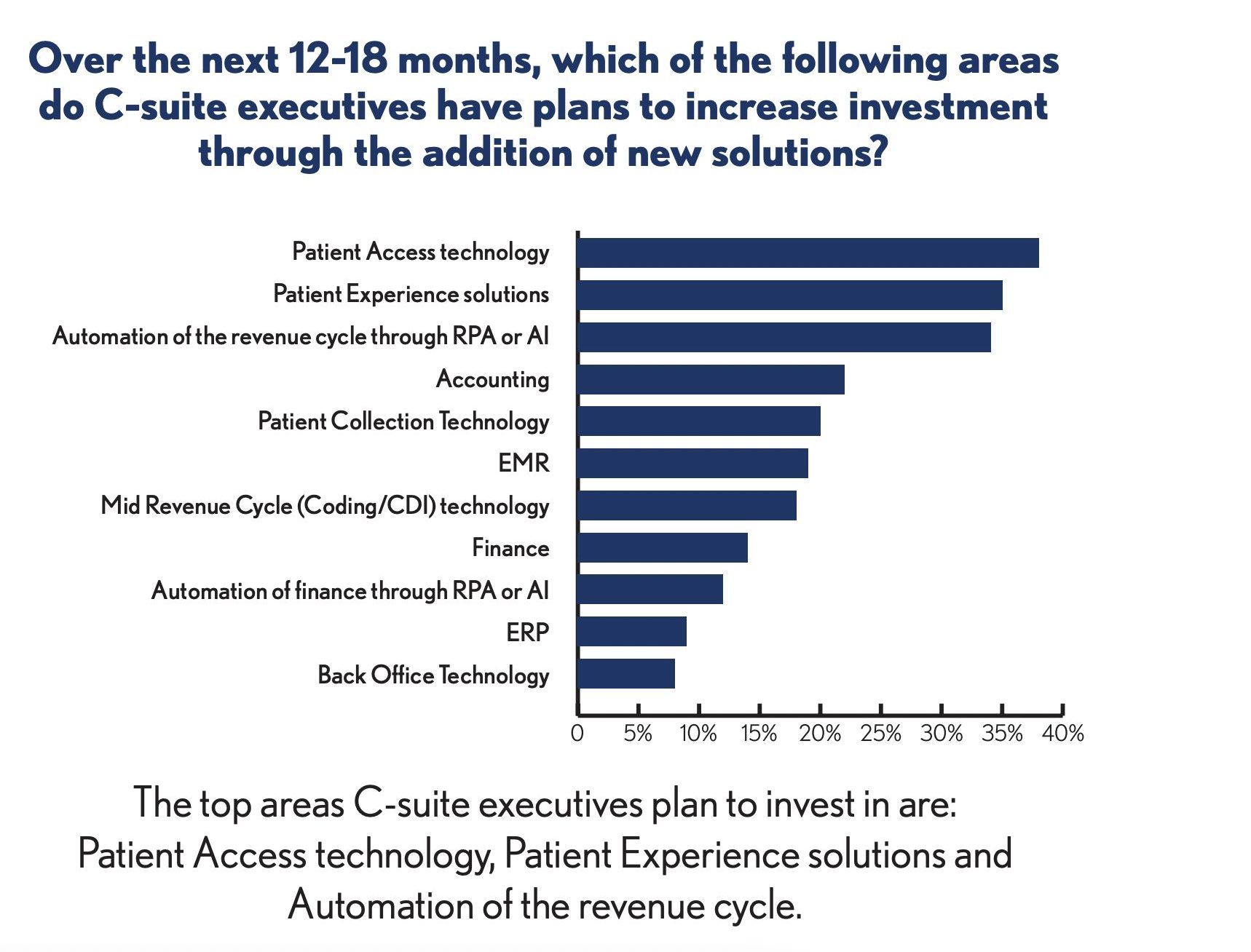Content Strategy
8 Practical Ways to Leverage Healthcare Market Research in Your Content Strategy
By Megan Williams on December 6, 2023
Marketing leaders who come from editorial backgrounds (vs. other areas of business) have been a bright spot in my life as a healthcare tech writer. I love working with them; they bring fresh perspective to (often) stale content marketing strategies—but they have two common areas of vulnerability: They tend to approach content from an "inside-out" perspective, and they can be too quick on the content trigger.
I'm speaking in generalities, of course, but here's what I mean:
Content marketing is a conversation. In the same way a one-sided conversation is rarely effective, content based too heavily on internal culture and business goals wastes opportunity and resources. Marketers often don't realize their content isn't correctly aligned with stakeholder priorities because the pull of internal bias is so strong.
After all, despite the disruption that's shaped our industry's current condition, the concerns and needs of healthcare leaders aren't a mystery. Talk with any healthcare CEO or sit down on a webinar with health system executives, and you'll get a clear list of the topics and themes that pique their interest.
This isn't the same as understanding the external and internal factors and beliefs that are impacting how they make decisions. The magic of market research is the edge you can gain by grounding your content strategy in unbiased market realities.
The power of a research-informed content strategy
One of my favorite examples of the importance of leveraging market research comes from a decision support SaaS client who had been struggling for years to gain ground against larger competitors. They'd heard about weaknesses in competing products and knew their solution was a better fit for much of their market based on their decades of experience in the industry.
I learned from a survey of their target executives that their challenge wasn't a lack of differentiation or understanding of their value prop. The problem was they hadn't met the threshold of credibility in the market needed to enter the pool of consideration with bigger players. Their biggest challenge was awareness—a fact that we used to redirect their content focus.
In that instance, we were using first-party survey data, but similar inferences can be made using second and third-party research if you know what to look for. A market research-enhanced content strategy will help you keep in rhythm with the needs of healthcare decision-makers that you can use to align your messaging and coordinate the timing of your editorial calendar.
The research shortcut: A real-life example
I encourage all my clients to invest just a small corner of their budget into deeper conversations with their target market. But if that's not an option, there's a constant stream of research and interviews that can help you create content conversations that align with the perspectives of healthcare decision-makers.
I'm going to walk you through an example of what this looks like. We'll be using a recent study from the Healthcare Financial Management Association (HFMA)—but don't tune out because you're not in the finance space. There's a good chance finance leaders are on your list of your key decision-makers, but even if they aren't, the tactics we're exploring here can be used with any role or title.
We're going to be using HFMA Health System Purchase Plans 2023: Finance and Revenue Cycle, a report on health system purchasing plans, market opportunities, challenges, and traits for healthcare revenue cycle management (RCM) vendors. We'll explore ways to use the study as a guide to create a more precise and effective content strategy.
While we're using just one study, know that you can use any of the list items below to filter and/or classify the data in any market research, interview, or survey you run across.
1. Understanding of your "local" healthcare market
At its highest level, this report offers quick insight into this corner of the healthcare market.
The "Key Takeaways" section (a feature available for most market research reports) outlines a tightening market and the challenge of EMR companies offering more capabilities that could crowd the opportunities for RCM companies. But it also says that the outlook remains strong for both end-to-end and niche RCM vendors. The section includes insights like:
- The positive outlook of health systems still being open to RCM solutions beyond their EMR
- The need for vendors to differentiate themselves from EMR solutions and other vendors with case studies and ROI
- The fact that health systems that are outsourcing are still buying
For a marketing leader who might be new to the industry, the key terms section additionally offers useful explanations of terms like "bolt-on" technology, "end-to-end RCM," and ERP systems.
Take action:
Before getting into the weeds, this is an opportunity to review your current content strategy to decide whether it's structured to consider these factors. Ask whether your current approach is ready to take on tasks like addressing the EMR question through differentiation, leveraging the use of case studies and tools to prove ROI (I love a good ROI calculator), and segmenting by outsourcing organizations vs. non.
2. How to differentiate
This study is straightforward in its conclusion that healthcare vendors need to differentiate themselves from both EMR solutions and other vendors. It provides useful guidance on the fact that any vendor selling into the finance department needs to lead with stories of organizational efficiency and ease of use.
It highlights the differentiators finance stakeholders care about beyond ROI, including flexible pricing methods, adjustable implementation costs, and free trials.
Take action:
Since many of the revelations in this section creep outside the content sphere, now is a good time to pull in other branches of the marketing and sales departments to discuss the flexibility you might have in adjusting pricing, implementation costs, and offering free trials. Now is also an opportunity to talk to sales reps to get more intel on how your market has responded to these tactics in the past to adjust your future content.
3. Explore alternative segmentation
Segmentation doesn't have to be limited to "traditional" healthcare firmographics of org type, size, and region.
The HFMA study touches on another option—outsourcing status. In its "Health System Buying Dynamics" section, it dives into the numbers around outsourcing RCM activities. What stands out here from a content perspective is the breakdown of which health system sizes are most open to considering full outsourcing. But it also explores how health systems that are currently outsourcing feel about outsourcing in the future, specifically around functions including denials, prior authorization, and clinical documentation improvement (CDI) technology.
Take action:
If you'd like to test drive the outsourcing segment angle, this type of information is generally available through commercial intelligence providers; outsourcing status is also something your sales team is probably tracking or (at least) has anecdotal knowledge of. Consider creating content that specifically addresses the outsourcing question (something my clients have had success with) or even concentrating content on the outsourcing status segment where you feel you have the most opportunity for conversion.
4. Pain points and challenges
Pain points flow through every level of your content strategy, from messaging and branding to the most basic social media post. The HFMA report "Market Dynamics" section covers key pain points including:
- The healthcare labor market
- Margin pressures since the beginning of the COVID-19 pandemic
- Payment challenges
- M&A activity for hospitals and health systems
It outlines some of the root causes behind these challenges, as well as explains how health system leaders are responding.
Take action:
Since this study covers buying plans for the next 12-18 months, it would be a good idea to review current messaging and content themes for alignment with the themes covered in the study.
5. Responding to buyers' current vendor sentiment
This section is probably the most direct in its recommendation for marketers, advising bolt-on vendors on how to identify health systems that are open to their offering and how they should approach market relationships with EMRs. It also highlights the importance of "preferred vendor" status.
What's incredibly useful here is the section on buyers' willingness to consider a bolt-on vendor by solution, breaking it down by 20 technologies, including patient accounting/business office management, prior authorization, patient self-service/digital front door, CDI, charge capture, and revenue integrity.
Take action:
This type of information should inform whether your content strategy should focus on EHR segments where preferred vendor status is already achieved. In segments where the status has yet to be achieved, it might be worth exploring how to become a preferred vendor with EHR companies where you've had the most success.
6. Inform content distribution
Distribution can be particularly challenging, especially when selling to enterprise healthcare organizations—vendors can't be passive and must meet healthcare leaders where they are. The nature of your average payor or health system org chart complicates this process. It's completely understandable that many vendors default to a shotgun approach to content and hope that the winds of SEO and social will blow in their favor. However, studies like this present an opportunity to make more deliberate content planning decisions—including how to break flagship assets into highly targeted, atomized content that better serves the needs of different roles and titles within an organization.
The HFMA study gives clear recommendations on selling into the finance department (with advice on what traits to build a story around). It also outlines preferences for system-level decision-making, the instances where individual hospitals might be involved in part of a health system working group to review and select vendors, and which hospitals might be making decisions at the individual hospital level.
Take action:
If your content strategy does not account for decision-making level and use that information to inform distribution, this study could provide a solid start. Look for opportunities to refresh and refine your use of email lists, LinkedIn distribution, and even conferences to ensure the right content is getting in front of the right eyes.
7. Product marketing and positioning
The Outsourcing Perspectives section of this study offers a useful breakdown of the top RCM areas of investment over the next 12 to 18 months, including denials and appeals management, analytics, and AI-based coding—insights that can guide product marketing content in the near term.
Take action:
It will be worth reviewing whether your current product marketing content plans align with these priorities—shifting focus where appropriate—for example, scheduling solution guides and even production of sales collateral around the top investment areas.
8. Fuel customer marketing & surveys
Deeper into the report, the survey touches on the sentiment of health systems that are already outsourcing and where they plan to invest in the future. This type of insight can inspire customer marketing efforts and help refine the substance of first-party surveys to support retention and upselling.
Take action:
It will be worth a survey or discussions with current clients to gauge their interest in the investment areas covered over the next 18 months. Your findings should directly inform your customer marketing content over the next year or so.
In a world where content fatigue is the default, specificity is a strong ally. To learn more about research-guided content and get more key insights from this report, check out: Aligning Your Strategy to the Kinds of Content Healthcare Buyers Are Looking For and the Quick Start Guide to Research-Informed Content for Healthcare Vendors.




